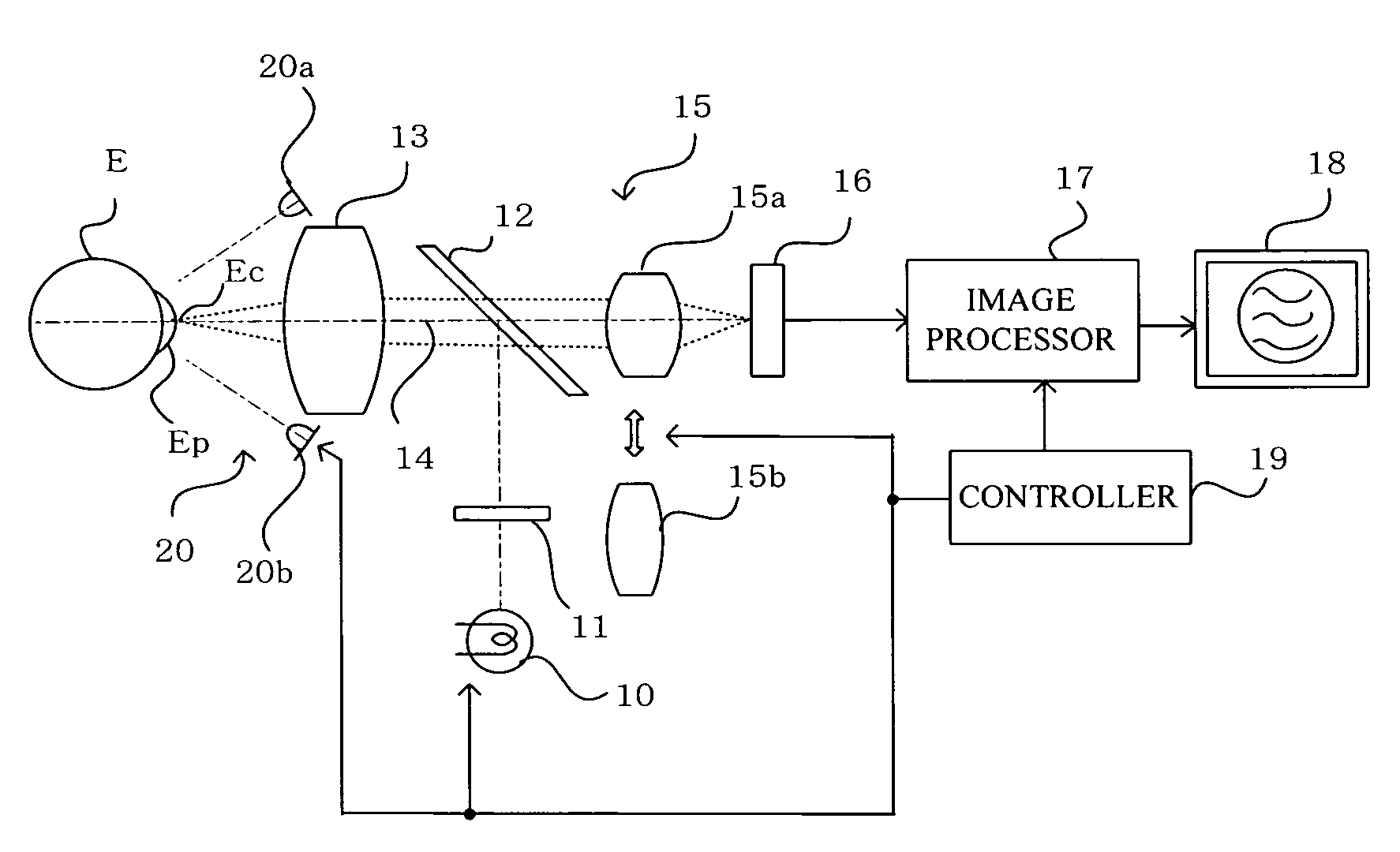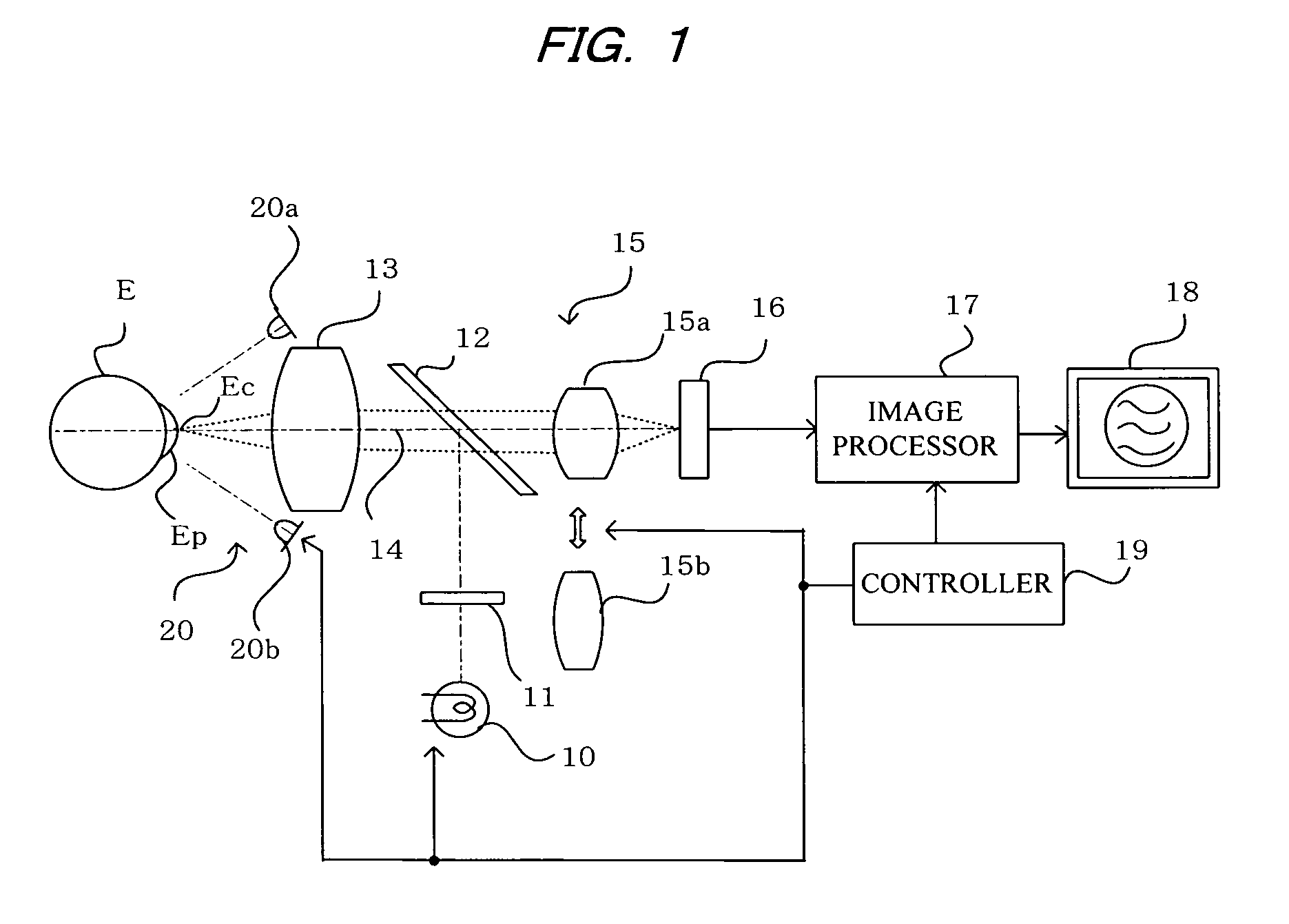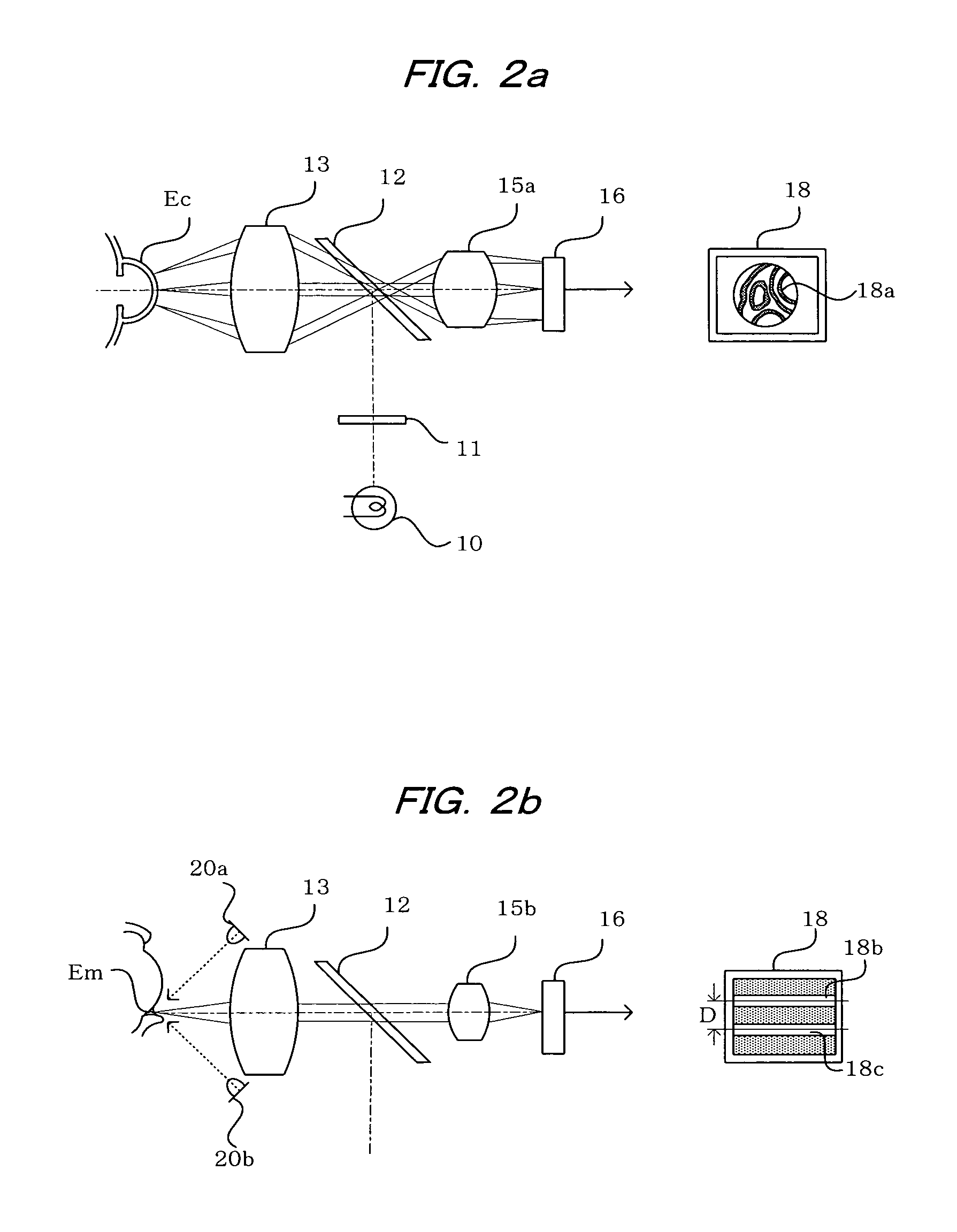Ophthalmic photography apparatus
a technology of ophthalmic photography and equipment, applied in the field of ophthalmic photography equipment, can solve problems such as the increase of equipment cos
- Summary
- Abstract
- Description
- Claims
- Application Information
AI Technical Summary
Benefits of technology
Problems solved by technology
Method used
Image
Examples
embodiment 1
[0039]FIG. 1 shows a configuration of the ophthalmic photography apparatus according to an embodiment of the present invention. In the drawing, numerical symbol 10 indicates a halogen lamp or other low-magnification light source for use as a first light source. Light from the low-magnification light source 10 passes through a polarization plate 11, is reflected by a half mirror 12 that has a reflection coefficient of about 30% and functions as an optical path splitting means, is made coaxial with an optical axis 14 of a photographing optical system, and is made to irradiate the anterior ocular segment Ep of a subject's eye E via an objective lens 13.
[0040]Light reflected from the cornea Ec of the subject's eye E forms an image on a CCD 16 as a photography means, via the objective lens 13, the half mirror 12, and a variable power lens 15. At this time, the optical axis 14 of the photographing optical system is adjusted so as to be at the center of the cornea Ec of the subject's eye.
[...
PUM
 Login to View More
Login to View More Abstract
Description
Claims
Application Information
 Login to View More
Login to View More - R&D
- Intellectual Property
- Life Sciences
- Materials
- Tech Scout
- Unparalleled Data Quality
- Higher Quality Content
- 60% Fewer Hallucinations
Browse by: Latest US Patents, China's latest patents, Technical Efficacy Thesaurus, Application Domain, Technology Topic, Popular Technical Reports.
© 2025 PatSnap. All rights reserved.Legal|Privacy policy|Modern Slavery Act Transparency Statement|Sitemap|About US| Contact US: help@patsnap.com



